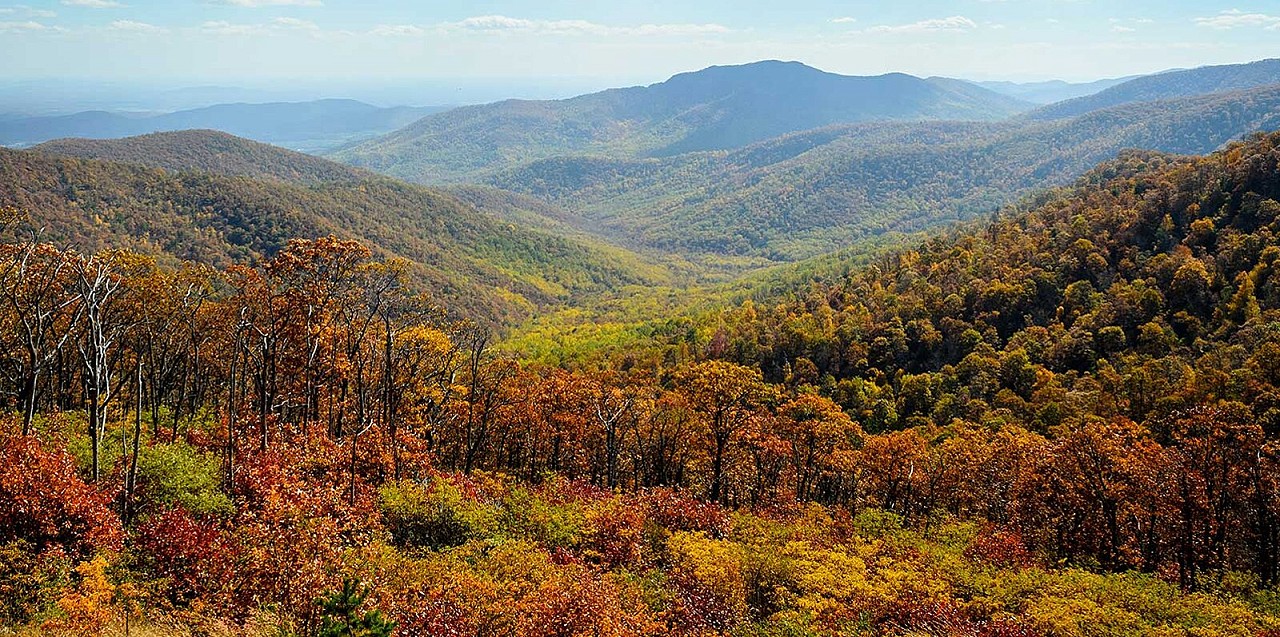


Shenandoah National Park extends along the Blue Ridge Mountains in the U.S. state of Virginia. The Skyline Drive runs its length, and a vast network of trails includes a section of the long-distance Appalachian Trail. Mostly forested, the park features wetlands, waterfalls and rocky peaks like Hawksbill and Old Rag mountains. Shenandoah is home to many bird species, plus deer, squirrels and the elusive black bear.
Just 75 miles from the bustle of Washington, D.C., Shenandoah National Park is a land bursting with cascading waterfalls, spectacular vistas, fields of wildflowers, and quiet wooded hollows. With over 200,000 acres of protected lands that are haven to deer, songbirds, and black bear, there's so much to explore...and your journey begins right here!
Assistive Listening Devices
Assistive listening devices are available for loan at both visitor centers for ranger programs and park films. Please ask at the information desks for more information.
Limberlost Trail
Limberlost Trail is a fully-accessible circuit hike that passes through a beautiful section of forest. Since 1996, several organizations have donated labor, equipment, supplies, and funding to help Shenandoah staff make the trail accessible.
Lodging
Accessible overnight lodging is available at Lewis Mountain, Skyland Resort, and Big Meadows Lodge.
Park Brochure
The Park brochure is available in braille at entrance stations and visitor centers. You can also download the brochure in Braille Ready Format (brf).
Picnic Grounds and Campgrounds
Accessible sites are available at all park picnic grounds and campgrounds. Accessible shower and laundry facilities are available at Big Meadows, Lewis Mountain, and Loft Mountain campgrounds. Restrooms at all picnic grounds are accessible, or accessible with assistance.
Ranger Programs
Many of Shenandoah's ranger-led programs are accessible, as indicated on the ranger program schedule.
Restrooms and Buildings
Most restrooms and buildings are accessible, or accessible with assistance.
Service Animals
In accordance to National Park Service guidance on service animals, dogs are the only animals that can be classified as service animals, and they must perform a specific task that assists a person with a disability. If the service dog meets this criteria, they are legally permitted anywhere that visitors can go. Owners are strongly encouraged to identify their working service dog in order to help prevent unwarranted complaints from other visitors.
If you bag your service dog's waste, be sure to have a bag or canister to put it in until you can find a trash can. Do not leave dog waste bags in trees, on trail posts, or discarded in the woods. If there’s no trash can immediately available, take it with you until you find one.
Virtual Tours
Many of our exhibits and visitor centers are available as virtual tours, which can be viewed from anywhere.

